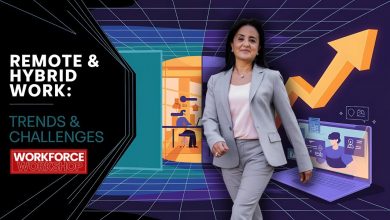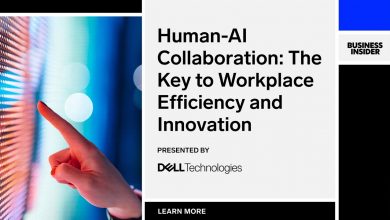 End User Computing (EUC) is undergoing a seismic evolution, powering the modern digital workplace with unprecedented flexibility, security, and user-centricity.
End User Computing (EUC) is undergoing a seismic evolution, powering the modern digital workplace with unprecedented flexibility, security, and user-centricity.
Once confined to clunky desktops tethered to office networks, EUC has broken free, propelled by advancements in cloud computing, virtualization, and mobile technology.
Today, it’s the backbone of a dynamic ecosystem that empowers employees to work seamlessly from anywhere, on any device, while keeping CIOs firmly in control of performance and compliance.
Desktops in the Cloud
At the heart of this shift is the move from traditional, hardware-heavy setups to lightweight, software-defined solutions. Virtual Desktop Infrastructure (VDI) and Desktop-as-a-Service (DaaS) now deliver fully functional workspaces to laptops, tablets, or even personal smartphones, untethering productivity from physical offices.
Pair this with the rise of Bring Your Own Device (BYOD) policies, and suddenly employees wield their preferred tools—be it a MacBook or an Android—while IT teams maintain governance through unified endpoint management (UEM) platforms. It’s a win-win: workers get freedom, and businesses get security.
But it’s not just about access—it’s about experience. Modern EUC integrates artificial intelligence and automation to anticipate user needs, troubleshoot issues preemptively, and personalize interfaces. Think smart workspaces that adapt to an employee’s role, auto-configuring apps for a salesperson in the field or a designer in a studio. Add in zero-trust security models—verifying every user, every time—and you’ve got a fortress that’s as resilient as it is agile.
Collaboration is the final piece of the puzzle. EUC now embeds real-time tools like Microsoft Teams or Slack directly into workflows, fueled by high-speed 5G and Wi-Fi 6 connectivity. File sharing, video calls, and co-editing happen instantly, whether teams are in Shanghai or San Francisco.
For CIOs, this evolution means orchestrating a digital workplace that’s not just functional but transformative—boosting engagement, slashing downtime, and turning every end user into a driver of innovation. The modern digital workplace isn’t static; it’s alive, and EUC is its beating heart.
VDI and DaaS
Virtual Desktop Infrastructure (VDI) and Desktop-as-a-Service (DaaS) are two powerhouse technologies revolutionizing how organizations deliver desktops and applications to users, forming a critical part of the modern digital workplace. They share a common goal—providing flexible, secure, and centralized computing environments—but they differ in execution and management, offering CIOs distinct paths to empower their workforce.
VDI is like a high-tech control hub housed within an organization’s own data center. It uses virtualization to create individual desktop instances on a server, each running its own operating system and applications.
Employees access these virtual desktops from any device—say, a laptop or thin client—via a secure connection, while the heavy lifting (processing, storage, etc.) happens on the server side. IT teams manage everything: the hypervisors (like VMware or Citrix), the servers, and the network infrastructure.
This gives companies granular control over security, updates, and customization. For example, a graphic designer might get a beefy virtual desktop with high-end GPU access, while a call-center agent gets a leaner setup. The catch? VDI demands significant upfront investment in hardware and expertise to maintain—think of it as building and running your own digital city.
DaaS, on the other hand, is the cloud-native cousin—think of it as renting a fully furnished penthouse instead of constructing a skyscraper. With DaaS, a third-party provider (like Amazon WorkSpaces or Microsoft Azure Virtual Desktop) hosts and manages the virtual desktops in their cloud infrastructure. Users still log in from their devices to access personalized workspaces, but the provider handles the servers, storage, and scaling.
For CIOs, this means less headaches over hardware upkeep and more agility—spin up 100 desktops for a new project in hours, not weeks. It’s subscription-based, so costs are predictable, and updates roll out automatically. The trade-off? Less control over the underlying systems and potential reliance on internet reliability.
Both VDI and DaaS unshackle employees from physical workstations, enabling remote work, enhancing disaster recovery (data lives centrally, not on devices), and tightening security through centralized patching and monitoring. VDI suits organizations with strict compliance needs or hefty customization demands—like healthcare or finance—while DaaS shines for flexibility-hungry businesses, startups, or those dodging CapEx.
Together, they’re turbocharging the digital workplace, letting users thrive anywhere while keeping IT in the driver’s seat.



